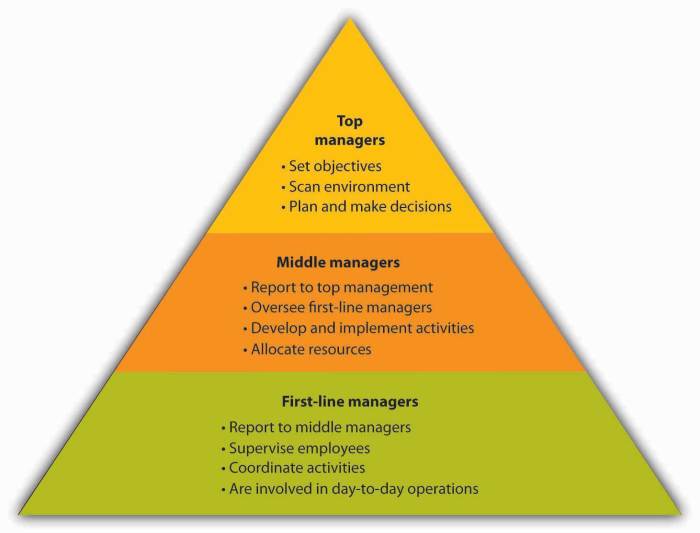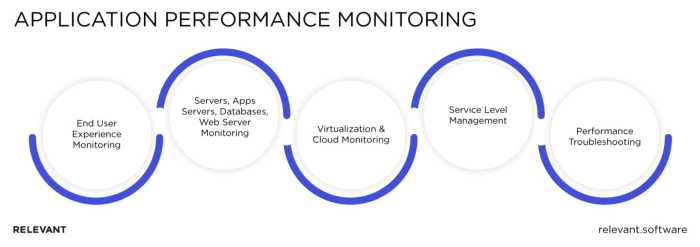Developing a robust cloud strategy is crucial for enterprises navigating the modern digital landscape. This comprehensive guide explores the essential steps, from assessing current infrastructure to optimizing cloud costs and managing data migration. We’ll delve into various cloud deployment models, service types, and security considerations, providing practical insights and actionable steps for success.
Understanding the diverse needs of an enterprise and aligning a cloud strategy accordingly is paramount. This involves careful consideration of factors such as security protocols, compliance regulations, and scalability requirements. Successful cloud migration hinges on meticulous planning and execution, which we’ll examine in detail.
Defining Enterprise Cloud Needs
A robust cloud strategy is crucial for modern enterprises to optimize operations, enhance agility, and drive innovation. Defining precise cloud needs requires a deep understanding of various deployment models, suitable applications, and critical factors influencing adoption. This section delves into these aspects, offering a comprehensive overview of developing a successful enterprise cloud strategy.Enterprise cloud adoption is no longer a futuristic concept but a necessity for staying competitive.
Organizations must carefully evaluate their specific needs and choose the deployment model that best aligns with their business objectives, risk tolerance, and regulatory requirements.
Cloud Deployment Models
Different cloud deployment models cater to varying needs and security requirements. Understanding the distinctions between these models is essential for a successful cloud strategy.
- Public Cloud: This model utilizes shared infrastructure resources owned and managed by a third-party provider. It offers scalability and cost-effectiveness, making it ideal for applications with fluctuating demand. Examples include cloud storage, email services, and basic web applications.
- Private Cloud: A private cloud is a dedicated infrastructure environment, either on-premises or hosted by a third party, solely for a single organization. This model provides greater control and security, especially for sensitive data and applications with strict compliance requirements. Financial institutions, for instance, frequently leverage private clouds for their core banking systems.
- Hybrid Cloud: This model combines elements of both public and private clouds. It allows organizations to leverage the scalability of the public cloud for non-critical applications while maintaining sensitive data and mission-critical workloads on a private cloud. This approach offers flexibility and control, ensuring business continuity.
- Multi-Cloud: This strategy involves using cloud services from multiple providers. This approach allows for greater flexibility and avoids vendor lock-in, enabling organizations to choose the best service for each specific application or workload. This model is especially attractive for organizations with diverse needs and complex systems.
Suitable Enterprise Applications and Workloads
Not all applications are equally suited for cloud environments. Factors such as data sensitivity, transaction volume, and application complexity influence suitability.
- Data-intensive applications, such as big data analytics and machine learning, benefit significantly from the scalability and processing power offered by cloud platforms. The ability to quickly scale resources enables these applications to handle massive datasets efficiently.
- Collaboration tools, like project management software and communication platforms, are highly adaptable to cloud deployments. Their distributed nature and collaborative features are perfectly suited for remote teams and global organizations.
- Development and testing environments can be significantly streamlined through cloud-based platforms. The ability to quickly provision and scale resources accelerates the development cycle and allows for efficient testing.
- Disaster recovery and business continuity solutions often leverage cloud-based infrastructure to ensure minimal downtime and data loss in case of emergencies.
Key Factors Influencing Enterprise Cloud Adoption
Several factors play a crucial role in an organization’s decision to adopt cloud computing.
- Cost: Cloud computing can reduce capital expenditure by eliminating the need for on-premises infrastructure. However, organizations must carefully analyze potential operational costs, including usage charges and maintenance. Careful cost modeling and forecasting are essential.
- Security: Ensuring the security of data and applications in the cloud is paramount. Robust security measures, including access controls, encryption, and vulnerability management, are vital. A proactive approach to security is crucial.
- Compliance: Many industries have specific regulatory requirements for data storage and processing. Cloud providers must comply with these regulations, and organizations need to ensure their chosen cloud solution meets those standards. Understanding compliance requirements is critical.
- Scalability: Cloud environments offer the flexibility to scale resources up or down based on demand. This adaptability is essential for organizations that experience fluctuating workloads or need to handle sudden increases in user demand.
Examples of Successful Enterprise Cloud Migrations
Many enterprises have successfully migrated to the cloud, demonstrating the viability and benefits of this approach.
- Company X successfully migrated its customer relationship management (CRM) system to the cloud, reducing IT infrastructure costs by 25% and increasing operational efficiency by 15%. The lessons learned included careful planning, phased migration, and employee training.
- Company Y implemented a hybrid cloud strategy, utilizing the public cloud for non-critical applications and maintaining sensitive data on a private cloud. This approach provided greater control over sensitive data while leveraging the scalability of the public cloud for other applications.
Comparison of Cloud Deployment Models
| Deployment Model | Advantages | Disadvantages |
|---|---|---|
| Public Cloud | Scalability, cost-effectiveness, accessibility | Security concerns, vendor lock-in, potential compliance issues |
| Private Cloud | Enhanced security, control, compliance | High upfront costs, limited scalability, potential operational complexity |
| Hybrid Cloud | Flexibility, control over sensitive data, scalability | Complexity in management, potential integration challenges |
| Multi-Cloud | Avoidance of vendor lock-in, choice of best services, flexibility | Increased complexity in management, potential vendor compatibility issues |
Assessing Current Infrastructure
A critical step in developing a robust cloud strategy for an enterprise is a thorough assessment of its existing IT infrastructure. This evaluation provides a baseline understanding of current capabilities, limitations, and potential areas for improvement. Understanding the current state enables informed decisions regarding cloud migration, application selection, and security implementation. This assessment forms the foundation for a successful transition to the cloud.A comprehensive evaluation of the existing IT infrastructure is essential for optimizing cloud adoption.
It identifies potential challenges and opportunities, allowing for a strategic approach to cloud migration. This approach will facilitate a smooth transition and maximize the benefits of cloud computing.
Evaluating Cloud Readiness
The process of evaluating an enterprise’s IT infrastructure for cloud readiness involves a multi-faceted approach. This includes analyzing existing infrastructure components, identifying applications and data suitable for migration, and evaluating current security protocols and policies. This holistic approach ensures a smooth and secure transition to the cloud.
Identifying Cloud-Migratable Applications and Data
Identifying applications and data suitable for migration to the cloud necessitates careful consideration of several factors. Application characteristics such as architecture, dependencies, and data volume are crucial. Data sensitivity and regulatory compliance requirements also play a critical role. Prioritizing applications and data based on factors such as cost savings potential, scalability needs, and operational efficiency is crucial for a successful migration.
Assessing Current Security Protocols and Policies
Evaluating existing security protocols and policies is vital for ensuring a secure cloud environment. This involves analyzing existing access controls, data encryption methods, and incident response plans. The assessment also encompasses the evaluation of compliance with relevant regulations and industry best practices. Maintaining a high level of security throughout the transition to the cloud is critical.
Checklist for Evaluating Infrastructure Components
A structured checklist aids in the thorough evaluation of current infrastructure components. This checklist is designed to systematically evaluate servers, storage, and networking infrastructure. A comprehensive checklist ensures a comprehensive evaluation.
- Servers: Assess server hardware specifications, operating system versions, and application dependencies. Evaluate server utilization and capacity planning.
- Storage: Analyze storage capacity, type (e.g., SAN, NAS), and data redundancy strategies. Evaluate storage performance and identify potential bottlenecks.
- Networking: Assess network bandwidth, latency, and security measures. Evaluate network topology and identify potential limitations in supporting cloud applications.
Questions for Stakeholders
A series of well-defined questions for stakeholders provides valuable insights into the current IT infrastructure. These questions help understand the existing infrastructure’s strengths, weaknesses, and potential for cloud migration. Understanding stakeholder perspectives is crucial for building consensus and planning for the cloud transition.
- What are the key performance indicators (KPIs) for your current IT infrastructure? This helps identify the current performance levels.
- What are the major challenges and limitations of the current infrastructure? This identifies areas that need improvement.
- What are the data storage and access protocols in place? This ensures that data access and storage meet security and compliance needs.
- What are the current security protocols and policies in place? This ensures a secure and compliant transition to the cloud.
- What are the current applications and data used? This helps in identifying potential candidates for cloud migration.
Developing a Cloud Strategy Roadmap
A well-defined cloud strategy roadmap is crucial for a successful enterprise cloud migration. It provides a structured approach for identifying and prioritizing cloud migration projects, outlining a phased approach to cloud adoption, and ensuring alignment with overall business objectives. This roadmap serves as a vital guide, ensuring a smooth and efficient transition to the cloud environment.A comprehensive cloud strategy roadmap acts as a blueprint for migrating applications and data to the cloud, encompassing detailed planning and execution phases.
This document will detail the creation of such a roadmap, including considerations for different cloud service models and prioritization methodologies. It also addresses the importance of phased adoption for a controlled and manageable transition.
Creating a Migration Roadmap
A cloud migration roadmap is a detailed plan that Artikels the steps, timelines, and resources required for migrating applications and data to the cloud. It should be aligned with the enterprise’s overall business objectives and encompass all necessary aspects, from application identification to data migration strategies. This detailed roadmap allows for a smooth and efficient transition, minimizing disruptions and maximizing return on investment.
Identifying and Prioritizing Cloud Migration Projects
Prioritizing projects is essential for maximizing the benefits of cloud migration. Projects should be assessed based on factors such as business impact, technical complexity, and potential cost savings. High-priority projects typically deliver significant value quickly and have a low risk of failure.
- Business Value Assessment: Each application and data set is assessed for its contribution to core business functions. Critical applications and data are prioritized for early migration to minimize disruption and maximize the immediate benefits.
- Technical Complexity: The technical complexity of migrating each application and data set is evaluated. Projects with lower complexity are prioritized to gain initial experience and build momentum for more complex migrations.
- Cost Savings Potential: The potential cost savings associated with each migration are evaluated. Projects with high cost-saving potential are prioritized to maximize the return on investment.
- Dependencies and Interdependencies: Dependencies between applications and data sets are identified and accounted for. Projects that are critical for supporting other systems are prioritized accordingly.
Cloud Service Models and Suitability
Understanding the different cloud service models (IaaS, PaaS, SaaS) and their characteristics is critical for selecting the most suitable model for each application.
| Service Model | Description | Suitability |
|---|---|---|
| IaaS (Infrastructure as a Service) | Provides basic computing resources (servers, storage, networking) over the internet. | Suitable for applications requiring significant customization, high control, and complex infrastructure configurations. |
| PaaS (Platform as a Service) | Provides a platform for developing, running, and managing applications without managing the underlying infrastructure. | Suitable for applications requiring a pre-configured environment and rapid deployment, while maintaining some customization options. |
| SaaS (Software as a Service) | Provides access to software applications over the internet. | Suitable for applications that require minimal customization and maintenance, and focus on ease of use. |
Phased Approach to Cloud Adoption
A phased approach to cloud adoption allows for a controlled and manageable transition. It involves migrating applications and data in stages, starting with less critical components and gradually expanding to more complex ones. This approach minimizes disruption and allows for continuous learning and refinement.
- Assessment and Planning Phase: Thorough assessment of current infrastructure and applications. Detailed planning for the migration strategy is developed. This includes the identification of suitable cloud service models for each application.
- Pilot Phase: A small-scale migration of a specific application or data set to the cloud. This phase provides valuable experience and allows for testing of the migration process.
- Expansion Phase: Gradually expanding the migration to encompass additional applications and data sets, building on the experience gained in the pilot phase.
- Optimization Phase: Optimizing the cloud environment to ensure maximum performance, security, and cost-effectiveness. This phase includes monitoring, fine-tuning, and adjusting resource allocation.
Template for Documenting the Cloud Strategy Roadmap
A well-structured template is essential for documenting the cloud strategy roadmap. This template should include sections for:
- Executive Summary: A brief overview of the roadmap.
- Business Goals and Objectives: Alignment with the enterprise’s overall goals.
- Current State Assessment: Detailed analysis of the current IT infrastructure.
- Cloud Service Models: Selection of the appropriate cloud service models for each application.
- Migration Plan: Detailed steps, timelines, and resource allocation for each application.
- Security and Compliance: Addressing security and compliance requirements for the cloud environment.
- Monitoring and Maintenance: Post-migration monitoring and maintenance strategies.
- Budget and Cost Projections: Detailed budget and cost projections for the entire migration.
Choosing the Right Cloud Provider
Selecting the appropriate cloud provider is a critical step in developing a robust cloud strategy. This decision significantly impacts the scalability, security, and overall success of an enterprise’s cloud initiatives. Carefully evaluating various providers and their offerings is paramount to achieving optimal results.Evaluating cloud providers demands a meticulous approach. It’s not simply about choosing the “cheapest” option; rather, it necessitates a comprehensive assessment of features, pricing models, support capabilities, and vendor-specific compliance measures.
A strategic approach that aligns with the specific needs of the enterprise is essential for maximizing the benefits of cloud adoption.
Comparison of Cloud Providers
Different cloud providers offer varying features and pricing models. Understanding these distinctions is crucial for aligning the provider’s capabilities with the enterprise’s requirements. The three major players – AWS, Azure, and GCP – each boast unique strengths. Factors like pricing models, feature sets, and support levels must be considered.
Pricing Models
Cloud providers employ diverse pricing models, impacting the total cost of ownership. AWS, known for its extensive service catalog, often utilizes a pay-as-you-go model, along with reserved instances and other options for cost optimization. Azure offers similar flexible pricing structures, with varying tiers for compute, storage, and data transfer. GCP, while having a competitive price point, sometimes features a more complex pricing structure based on resource utilization.
Features and Services
Cloud providers offer a range of services, including computing power, storage solutions, databases, and more. AWS boasts a vast ecosystem of services, often considered a one-stop shop. Azure emphasizes its enterprise-grade features, especially regarding integration with on-premises systems. GCP focuses on advanced analytics and machine learning capabilities. The specific services required by the enterprise will dictate the provider’s suitability.
Support and Compliance
The quality and availability of support are essential. Each provider offers different support tiers and options, including dedicated support teams and self-service resources. Compliance requirements also vary. Providers should be evaluated based on the enterprise’s specific compliance needs. The ability to meet compliance requirements and handle potential security breaches is critical for enterprises in regulated industries.
Vendor Selection Criteria
Selecting a cloud provider necessitates a detailed assessment of critical vendor selection criteria. These criteria include security measures, data protection protocols, and compliance with industry standards. Scalability and flexibility of the provider’s infrastructure are also crucial for adapting to future business needs.
Factors to Consider
Several key factors influence the choice of a cloud provider. Geographic location and data residency policies are crucial considerations. The provider’s presence in a specific region may offer faster data access and reduced latency. Data residency policies should align with the enterprise’s regulatory requirements and geographic limitations.
Evaluating Provider Offerings
Evaluating cloud provider offerings requires a structured approach. Start by identifying the specific enterprise needs in terms of computing power, storage capacity, and other resources. Then, assess the pricing models, features, and support options offered by each provider. A detailed comparison table can be very helpful.
Comparison Table
| Provider | Pricing | Features | Support |
|---|---|---|---|
| AWS | Pay-as-you-go, reserved instances | Extensive service catalog, broad ecosystem | Robust support options, various tiers |
| Azure | Flexible pricing tiers | Enterprise-grade features, on-premises integration | Dedicated support teams, self-service resources |
| GCP | Competitive pricing, complex structure | Advanced analytics, machine learning focus | Strong emphasis on self-service resources |
Security and Compliance Considerations
Securing enterprise data in the cloud is paramount. A robust cloud strategy must prioritize data protection, regulatory compliance, and ongoing security monitoring. This involves implementing strong security measures throughout the cloud lifecycle, from initial deployment to ongoing management. Failure to address these considerations can lead to significant financial losses, reputational damage, and legal repercussions.A comprehensive security strategy in the cloud encompasses a wide range of measures, including encryption, access controls, and regular security audits.
Careful planning and execution are critical to ensuring that sensitive data remains protected and compliant with industry regulations.
Importance of Security in Cloud Deployments
Robust security measures are crucial for maintaining data confidentiality, integrity, and availability. A well-defined security strategy reduces the risk of data breaches, unauthorized access, and compliance violations. This is vital for maintaining customer trust and avoiding costly legal issues. For example, a healthcare organization relying on cloud services for patient data must ensure compliance with HIPAA regulations.
Similarly, financial institutions must comply with stringent PCI DSS requirements.
Security Measures for a Robust Cloud Strategy
Implementing a strong security posture necessitates a multi-layered approach. This includes employing strong encryption methods for data at rest and in transit. Access controls and user authentication mechanisms should be highly granular, limiting access to only authorized personnel. Regular security audits and penetration testing are essential to identify and mitigate vulnerabilities. Continuous monitoring and incident response plans are vital to address security threats proactively.
Data Encryption and Access Controls
Data encryption plays a critical role in safeguarding sensitive information. Encryption protects data both at rest (stored data) and in transit (data being transmitted). Robust access controls define who can access specific data and resources. This includes granular permissions, multi-factor authentication, and role-based access control (RBAC). These measures limit the potential impact of unauthorized access and breaches.
Security Best Practices for Cloud Environments
Adopting security best practices is vital for maintaining a secure cloud environment. These include regularly patching and updating cloud infrastructure and applications. Implementing a zero-trust security model assumes no implicit trust in any user or device. Implementing security information and event management (SIEM) tools helps monitor and analyze security events. Regular security awareness training for employees is also crucial for preventing social engineering attacks.
Regular security assessments are crucial for identifying and addressing weaknesses.
Steps in Establishing Secure Access to Cloud Resources
Establishing secure access to cloud resources involves several key steps. Firstly, implement strong passwords and enforce password policies. Secondly, utilize multi-factor authentication (MFA) for enhanced security. Thirdly, implement role-based access control (RBAC) to limit access based on job functions. Fourthly, regularly review and update access permissions.
Finally, employ network segmentation to isolate sensitive data and applications. This minimizes the impact of any security breaches.
Cost Optimization Strategies

Optimizing cloud costs is crucial for enterprises seeking to leverage the benefits of cloud computing without exceeding budgetary constraints. A well-defined strategy ensures efficient resource allocation, minimizes unnecessary spending, and maximizes the return on investment (ROI) from cloud services. This involves a proactive approach to managing cloud resources and a continuous monitoring process to identify and address potential cost-saving opportunities.
Strategies for Optimizing Cloud Costs
Effective cost optimization strategies encompass a multifaceted approach. This includes understanding resource utilization patterns, implementing cost-saving techniques for various cloud services, and employing proactive monitoring and analysis tools. A comprehensive understanding of pricing models, coupled with proactive resource management, forms the bedrock of successful cloud cost optimization.
Managing Cloud Resource Utilization and Spending
Effective cloud cost management hinges on understanding and controlling resource utilization. Monitoring resource usage in real-time, coupled with the implementation of automated scaling policies, is crucial. This dynamic approach helps to avoid unnecessary charges and optimize spending based on actual demand. By implementing appropriate policies, enterprises can effectively mitigate costs.
Importance of Monitoring and Analyzing Cloud Costs
Regular monitoring and analysis of cloud costs are essential to identify potential areas for improvement and cost savings. Real-time monitoring tools provide valuable insights into resource consumption patterns, enabling proactive adjustments to resource allocation and pricing models. Analysis of historical data provides a deeper understanding of spending trends, revealing areas where costs can be reduced through optimization and automation.
Cost-Saving Techniques for Different Cloud Services
Various cost-saving techniques can be applied to different cloud services. For compute instances, implementing spot instances or reserving capacity can significantly reduce costs. Storage optimization, including using efficient storage tiers and implementing data lifecycle management policies, can also yield substantial savings. Network optimization, by utilizing optimized networking configurations, and reducing data transfer costs, contributes to cost savings.
Example of Cost-Saving Techniques for Compute Instances
Spot instances, which utilize unused compute capacity, can reduce costs considerably. Reserved instances offer significant savings when predictable usage patterns exist. Automated scaling, based on demand, optimizes compute resources, preventing over-provisioning.
Example of Cost-Saving Techniques for Storage Services
Utilizing lower-cost storage tiers for infrequently accessed data can substantially reduce storage costs. Implementing data lifecycle management policies to automate the migration of data to less expensive tiers, based on usage frequency, maximizes cost savings. Implementing data compression and deduplication techniques optimizes storage utilization.
Example of Cost-Saving Techniques for Networking Services
Optimizing network configurations, reducing data transfer costs, and implementing appropriate security measures can result in significant cost savings. Leveraging a global network infrastructure with optimized data routing policies helps to reduce transfer costs.
Template for Tracking Cloud Spending
A comprehensive template for tracking cloud spending should include various metrics, such as:
- Service Category: This helps to categorize spending across different cloud services (Compute, Storage, Networking, Database).
- Resource Type: This specifies the specific instance type, storage class, or networking configuration.
- Usage Metrics: This details metrics such as CPU utilization, storage consumed, or data transfer.
- Cost Breakdown: This section details the costs associated with each resource, broken down by service and usage.
- Savings Opportunities: This column identifies potential areas for cost savings, such as transitioning to lower-cost instances or optimizing storage tiers.
This detailed template aids in the comprehensive analysis of cloud spending, enabling effective cost optimization strategies.
Data Migration and Management
Data migration to the cloud is a critical phase in developing a robust cloud strategy. Successful migration hinges on careful planning, execution, and ongoing management. Effective data management within the cloud environment ensures data accessibility, security, and compliance, while reducing operational costs and enhancing efficiency. The process requires a thorough understanding of data governance, compliance requirements, and the selection of appropriate tools and strategies.A well-defined data migration plan, encompassing data inventory, assessment, and migration strategy, is paramount.
This enables organizations to successfully transition data to the cloud while minimizing disruption to ongoing operations. A robust data management framework within the cloud environment is essential to maintaining data quality, ensuring data accessibility, and facilitating collaboration among stakeholders.
Data Migration Process
Data migration to the cloud necessitates a structured process involving several key steps. This process begins with a comprehensive data inventory, identifying all relevant data assets, their locations, formats, and dependencies. A detailed assessment of the data follows, evaluating its quality, completeness, and suitability for cloud storage. A migration strategy is then developed, outlining the approach, timeline, and resources required for the transfer.
This includes selecting appropriate migration tools and defining the target cloud environment. Thorough testing and validation are crucial steps to confirm data integrity and functionality in the cloud environment.
Data Management in the Cloud Environment
Effective data management in the cloud involves establishing clear data ownership, access control, and security protocols. Data classification and tagging are vital to ensuring appropriate access and usage policies. A robust metadata management system supports efficient data discovery and retrieval. Implementing version control and data retention policies maintains historical data while adhering to regulatory compliance. This process helps to reduce operational costs and enhance efficiency in the long run.
Data Governance and Compliance in Cloud Environments
Data governance in cloud environments is critical to ensuring compliance with regulations and maintaining data integrity. Establishing clear data ownership and access policies, defining data quality standards, and implementing data security measures are key aspects of a robust data governance framework. This includes compliance with industry regulations like GDPR, HIPAA, or CCPA, ensuring the protection of sensitive data.
Regular audits and compliance checks are crucial to maintain ongoing adherence.
Data Migration Tools and Their Use Cases
A variety of data migration tools are available, each with specific strengths and use cases. Data migration tools range from simple ETL (Extract, Transform, Load) tools to specialized cloud-based solutions. These tools facilitate the movement of data between different systems, ensuring data integrity and compatibility in the cloud environment. Tools specializing in structured data migration often employ database migration tools, while tools for unstructured data migration often rely on file transfer protocols or cloud storage services.
Data Backups and Recovery Strategies in the Cloud
Data backups and recovery strategies are essential for maintaining data availability and business continuity. Implementing a robust backup and recovery strategy in the cloud environment involves defining backup frequency, data retention policies, and restoration procedures. The cloud environment provides various options for backup and recovery, including native cloud services, third-party tools, and hybrid approaches. The choice of strategy should be aligned with the organization’s specific needs, risk tolerance, and regulatory requirements.
Cloud-based backup solutions often provide automated backups, rapid restoration capabilities, and improved disaster recovery options.
Cloud Operations and Management

Effective cloud operations are critical for maximizing the benefits of cloud adoption. A well-managed cloud environment ensures consistent performance, optimized resource utilization, and robust security. This involves a structured approach to managing and maintaining cloud resources, employing monitoring and automation techniques, and defining clear roles and responsibilities.Cloud operations encompass a wide range of activities, from provisioning and configuring resources to monitoring performance and responding to incidents.
A proactive approach, including automation and monitoring, minimizes downtime and ensures consistent service delivery. Successful cloud operations strategies often leverage automation, allowing for scalability and flexibility, and provide the infrastructure to support business growth.
Managing and Maintaining Cloud Resources
Proper resource management is essential for optimal cloud performance. This includes proactively identifying and addressing potential issues, optimizing resource allocation, and ensuring compliance with established policies. Effective resource management directly impacts costs and service reliability. Regular reviews and adjustments of resource allocation strategies ensure optimal performance and cost-effectiveness.
Monitoring Cloud Performance and Security
Monitoring cloud performance and security is vital for proactive issue resolution and maintaining service levels. This requires implementing robust monitoring tools and establishing clear escalation procedures for incidents. Regular performance metrics provide valuable insights into resource utilization, system stability, and overall cloud health.
- Performance monitoring tools are crucial for identifying bottlenecks and inefficiencies in the cloud environment. These tools track key metrics such as CPU utilization, network traffic, and storage capacity, allowing for early identification and resolution of potential issues. Real-time monitoring dashboards are a valuable resource to quickly pinpoint areas requiring attention.
- Security monitoring systems play a critical role in detecting and responding to potential security threats. These systems track suspicious activity, log security events, and generate alerts, enabling swift responses to breaches or vulnerabilities. Security information and event management (SIEM) solutions are essential components in modern security architectures.
Tools and Techniques for Automating Cloud Operations
Automation plays a key role in streamlining cloud operations, reducing manual effort, and ensuring consistency. Automation reduces human error, improves efficiency, and increases scalability. Scripting languages and configuration management tools are essential components in automating cloud operations.
- Infrastructure as Code (IaC) is a powerful approach to automating the provisioning and management of cloud infrastructure. Using code to define and manage infrastructure, rather than manual configurations, enhances consistency, reduces errors, and accelerates deployment. IaC tools like Terraform and CloudFormation allow for rapid provisioning of cloud resources.
- Cloud automation tools provide a range of capabilities for automating repetitive tasks, streamlining workflows, and reducing manual intervention. These tools often integrate with other cloud services, offering a holistic automation solution. Example automation use cases include provisioning servers, configuring networks, and deploying applications.
The Role of Cloud Administrators and Their Responsibilities
Cloud administrators play a vital role in ensuring the smooth operation of the cloud environment. Their responsibilities include managing cloud resources, monitoring performance, addressing security concerns, and maintaining compliance.
- Cloud administrators are responsible for the day-to-day management of cloud resources. This includes tasks such as provisioning and de-provisioning resources, managing user access, and ensuring compliance with security policies. Proactive maintenance and preventative measures are key responsibilities.
- Their expertise encompasses a wide range of skills, including cloud platform management, security protocols, and automation techniques. They need a strong understanding of cloud provider services and capabilities. Troubleshooting and incident resolution are key skills required.
Examples of Successful Cloud Operation Strategies
Many organizations have successfully implemented cloud operations strategies to achieve significant benefits. These strategies often focus on automation, monitoring, and security. Successful strategies are characterized by proactive management and a commitment to continuous improvement.
- A company migrated its entire infrastructure to the cloud and implemented an IaC solution. This reduced operational costs and allowed for faster deployment of new services. The reduction in manual configuration errors directly impacted the organization’s efficiency.
- A financial institution implemented a robust security monitoring system to detect and respond to potential threats. This resulted in a significant decrease in security incidents and enhanced the institution’s overall security posture. Proactive security monitoring is crucial for maintaining a strong security posture.
Training and Change Management

A successful cloud strategy hinges not just on technical implementation but also on the ability to adapt and integrate cloud technologies seamlessly into the existing enterprise culture. Effective employee training and change management are crucial for ensuring a smooth transition and maximizing the benefits of cloud adoption. Without proper training and a supportive approach, resistance to change and potential inefficiencies can hinder the overall success of the cloud migration.Understanding employee concerns and fostering a culture of cloud adoption are critical steps in ensuring a positive user experience and driving successful outcomes.
Employees must be equipped with the knowledge and skills necessary to leverage the cloud effectively, and the organization must proactively address any anxieties or uncertainties they might have. This proactive approach establishes a foundation for successful cloud implementation.
Importance of Employee Training
Comprehensive training programs empower employees with the knowledge and skills required to effectively utilize cloud technologies. This knowledge transfer equips them to adopt new processes and tools, fostering a smoother transition to cloud-based operations. Training programs should cover not only technical aspects but also the strategic benefits and implications of cloud adoption. This holistic approach helps employees understand the “why” behind the change, enhancing their engagement and acceptance.
Managing Employee Expectations and Concerns
Open communication and transparency are essential in managing employee expectations and concerns. Clearly outlining the benefits of cloud adoption, addressing potential anxieties about job security, and providing opportunities for feedback are crucial elements in this process. This proactive approach fosters trust and minimizes resistance to change. Regular updates, Q&A sessions, and dedicated support channels can help employees feel more confident and prepared.
Strategies for Building a Culture of Cloud Adoption
Building a culture of cloud adoption necessitates a shift in mindset and approach within the organization. Leadership commitment to cloud adoption, clear communication about the strategic vision, and demonstration of tangible benefits are essential components. Establishing cross-functional teams and fostering collaboration across departments help ensure that cloud adoption is viewed as a collective organizational effort.
Examples of Successful Employee Training Programs
Many organizations have successfully implemented cloud training programs by combining online modules with hands-on workshops and practical exercises. These programs often incorporate real-world scenarios and case studies to demonstrate the application of cloud technologies in a tangible manner. A successful program might involve personalized learning paths, regular feedback sessions, and access to dedicated support resources. For example, a financial institution could create a tailored training program for its analysts, demonstrating how cloud-based analytics tools can improve their efficiency and decision-making capabilities.
Roles, Responsibilities, and Training Needs
| Employee Group | Roles | Responsibilities | Training Needs |
|---|---|---|---|
| IT Staff | Cloud Architects, Administrators, Engineers | Designing, implementing, and maintaining cloud infrastructure, ensuring security and compliance | Advanced cloud technologies, security protocols, cloud migration methodologies, cloud management tools |
| Business Users | Analysts, Managers, Sales Representatives | Utilizing cloud-based applications and services, optimizing workflow, and generating insights from cloud data | Cloud application usage, data security best practices, cloud-based collaboration tools, data interpretation and visualization |
| Executives | CIOs, CEOs | Driving cloud adoption strategy, ensuring alignment with business goals, overseeing cloud budget and performance | Strategic implications of cloud adoption, cloud cost optimization, cloud security frameworks, cloud vendor comparisons |
This table provides a structured overview of the necessary training for different employee groups, emphasizing the tailored approach to training based on their specific roles and responsibilities. This will ensure that employees are adequately equipped to embrace the cloud effectively.
Final Thoughts
In conclusion, developing a successful cloud strategy requires a multifaceted approach. By meticulously evaluating current infrastructure, selecting the right cloud provider, and implementing robust security and cost optimization strategies, enterprises can leverage the benefits of cloud computing. This comprehensive guide provides a roadmap for organizations to confidently navigate the complexities of cloud adoption, ensuring a smooth transition and maximizing returns.
Commonly Asked Questions
What are the key factors to consider when choosing a cloud provider?
Vendor selection criteria are paramount. Security, compliance, support, scalability, geographic location, and data residency policies are critical considerations. A thorough evaluation of provider offerings tailored to specific enterprise needs is essential.
How can enterprises optimize cloud costs?
Cost optimization strategies involve managing resource utilization, monitoring and analyzing cloud spending, and implementing cost-saving techniques for different cloud services. A well-designed template for tracking cloud spending is crucial for effective cost control.
What is the importance of data governance in cloud environments?
Data governance and compliance are vital in cloud environments. This involves establishing policies and procedures for managing data access, security, and compliance with relevant regulations.
What are some common challenges in implementing a cloud strategy?
Common challenges include ensuring security, managing compliance with regulations, optimizing cloud costs, and ensuring successful data migration. Addressing these challenges requires a well-defined plan and careful execution.


